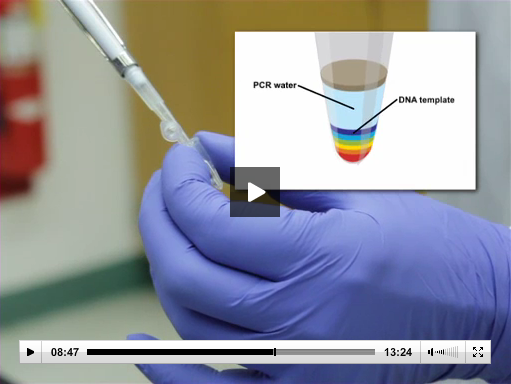Thank you for checking out our “30 days of Science Education” series. Use Science Education videos to introduce undergraduates to the lab.
Earlier this week we highlighted our Science Education video on Molecular Cloning—the process of replicating a select DNA fragment of interest for studying gene function. Today we introduce the related process of PCR, or, the Polymerase Chain Reaction.
PCR is a widely-used method for obtaining and amplifying DNA fragments from a small sample of DNA. And it has a vast number of uses in the field. For example, if a hair is collected at a crime scene, PCR can be used to replicate the DNA within that hair to create a larger sample and then identify a suspect. Furthermore, in the instance of molecular cloning the PCR-amplified DNA fragments can be applied for functional analysis in a given model system.
 In the second step, annealing, short pieces of DNA called primers, which are specific to the sense or antisense strands bind via hydrogen bonds.
In the second step, annealing, short pieces of DNA called primers, which are specific to the sense or antisense strands bind via hydrogen bonds.
Love the Science Education database? Get involved! Send us a photo from your lab applying DNA Gel Electrophoresis—the first method we highlighted in our 30 Days of Science Education series. Based off the images we've already received, you'll need to be extra creative in order to stand out (we’ve seen several great photos of "smiling" DNA Gels). The most creative images could win a $50 gift certificate or an assortment of other JoVE prizes!
E-mail me your picture directly at phil.meagher@jove.com.


